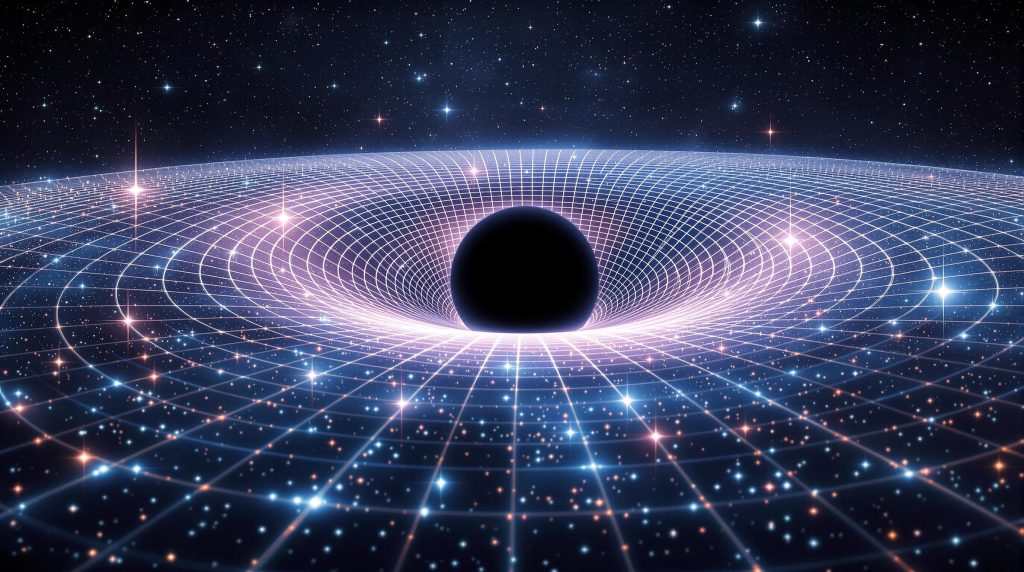When we look up at the night sky, it’s easy to think of space as a vast, empty void. But according to modern physics, space isn’t just a backdrop for celestial bodies—it’s an active, dynamic entity known as the space time fabric. This concept, introduced by Albert Einstein in his theory of general relativity, describes the universe as a four-dimensional continuum that combines space and time into a single, unified framework.
In this article, we’ll explore what space-time fabric is, how it works, and why it’s one of the most important concepts in understanding the cosmos.
The Origins of Space Time Fabric
The idea of space-time emerged from the work of Albert Einstein, who revolutionized our understanding of gravity with his general theory of relativity in 1915. Before Einstein, gravity was described by Isaac Newton as a force between two masses.
Einstein’s breakthrough was to propose that gravity isn’t a force in the traditional sense. Instead, it’s the result of curvatures in space-time, caused by massive objects like stars and planets.
Key Insight: Massive objects “bend” the fabric of space-time, and this curvature directs the motion of smaller objects.
Understanding the Space Time Fabric
To grasp the concept, it’s helpful to think of space-time as a flexible fabric, like a rubber sheet:
- Mass and Curvature: A heavy object placed on the sheet, like a bowling ball, creates a dent. Smaller objects, like marbles, will naturally roll toward the larger object due to the curvature.
- Gravity as Geometry: In this analogy, gravity is not a force pulling the marble—it’s the marble following the curved path created by the bowling ball.
This bending of space-time explains why planets orbit stars and why light can be bent by gravity, a phenomenon known as gravitational lensing.
The Four Dimensions of Space Time Fabric
Space-time combines the three dimensions of space (length, width, height) with the dimension of time into a single continuum.
- Spatial Dimensions: The physical dimensions of space that we perceive around us.
- Time: The fourth dimension, intertwined with the three spatial dimensions.
Einstein’s theory shows that time isn’t constant—it can speed up or slow down depending on the strength of gravity or the speed of an observer. This is known as time dilation.
Example: Astronauts on the International Space Station experience time slightly slower than people on Earth due to weaker gravitational effects—a real-life demonstration of space-time’s elasticity.
How Space-Time Fabric Shapes the Universe
The space-time fabric doesn’t just explain gravity; it also plays a role in shaping the universe itself:
1. Black Holes: Extreme Curvatures in Space-Time
Black holes are regions of space where the curvature of space-time becomes so extreme that nothing, not even light, can escape. These cosmic phenomena illustrate the incredible power of gravity to distort the fabric of the universe.
2. Gravitational Waves: Ripples in Space-Time
When massive objects like neutron stars or black holes collide, they send ripples through the fabric of space-time, known as gravitational waves. These waves were first detected in 2015 by LIGO, confirming another prediction of Einstein’s theory.
3. Cosmic Expansion
The space-time fabric itself is expanding, as discovered by Edwin Hubble in the 1920s. This expansion means galaxies are moving away from each other, carried along by the stretching fabric of the universe.

Space-Time and Everyday Life
While space-time might seem abstract, it has practical implications:
1. GPS Technology
The GPS system relies on precise measurements of time. Because satellites orbit Earth at high speeds and weaker gravity, their clocks run faster than those on the ground. Engineers account for this using Einstein’s equations, ensuring accurate navigation.
2. Predicting Planetary Motion
Understanding space-time allows scientists to calculate the motion of planets, comets, and other celestial bodies with incredible precision.
Challenges and Mysteries of Space Time fabric
Despite its success, the concept of space-time fabric raises questions that remain unanswered:
1. Quantum Gravity
Einstein’s theory doesn’t align with quantum mechanics, which governs the behavior of subatomic particles. Scientists are working to unify these frameworks into a theory of quantum gravity.
2. What is Space-Time Made Of?
Is space-time itself made of something fundamental? The nature of the fabric remains a topic of intense research.
3. The Big Bang and Beyond
What happened to the fabric of space-time during the Big Bang? And what is its ultimate fate as the universe expands?
The Future of Space-Time Research
Scientists are exploring space-time through advanced experiments and observations:
- Gravitational Wave Observatories: Facilities like LIGO and VIRGO are detecting ripples in space-time, providing insights into cosmic events.
- Cosmic Microwave Background (CMB): The CMB offers clues about the early universe and the role of space-time in its evolution.
- The Event Horizon Telescope: This global collaboration captures images of black holes, revealing how they warp space-time.

Why Does Space-Time Matter?
Understanding the space-time fabric isn’t just about solving scientific puzzles—it’s about unlocking the universe’s most profound secrets. From the motion of galaxies to the flow of time, space-time shapes everything we experience and strive to understand.
As we continue to explore this cosmic fabric, we edge closer to answering the ultimate questions about existence, reality, and our place in the universe.
For more fascinating insights into space, time, and the mysteries of the cosmos, visit SpaceyV—your go-to destination for exploring the wonders of the universe.
Resources
- NASA – Einstein’s Theory of General Relativity
- A detailed explanation of how space-time works and its implications for understanding gravity and the universe.
- https://www.nasa.gov/feature/einstein-s-theory-of-general-relativity
- LIGO Scientific Collaboration – Gravitational Waves and Space-Time
- Learn about how gravitational waves reveal the dynamic nature of space-time fabric.
- https://www.ligo.org/science/overview.php
- Space.com – What is Space-Time?
- A beginner-friendly guide to understanding the concept of space-time and its significance.
- https://www.space.com/space-time




